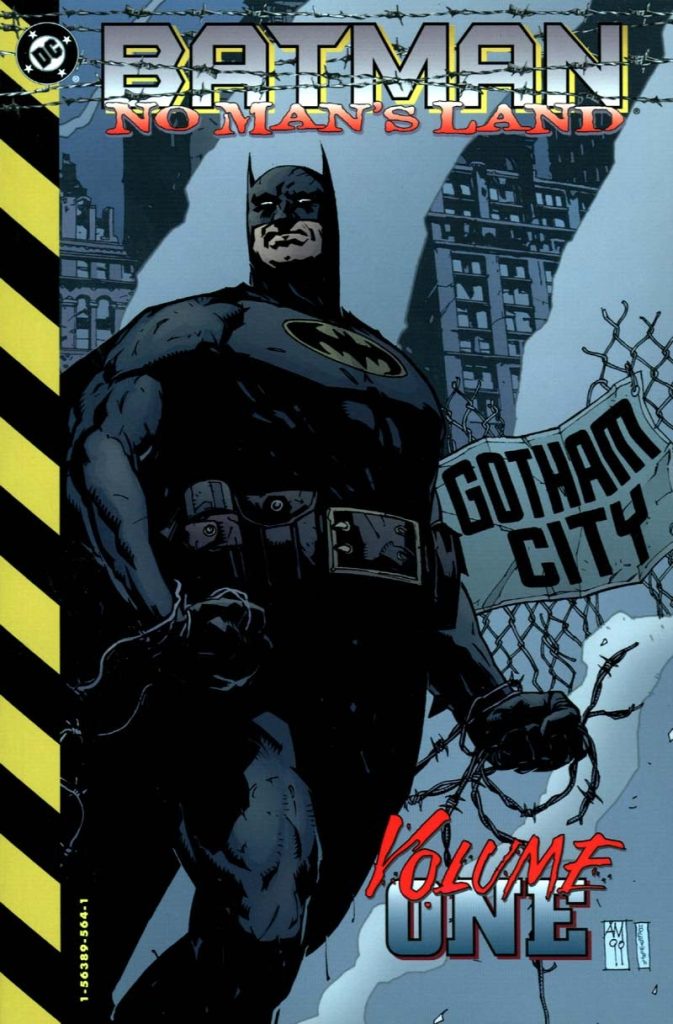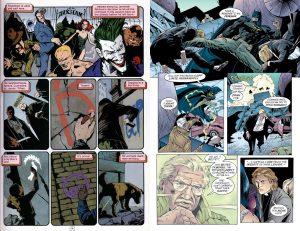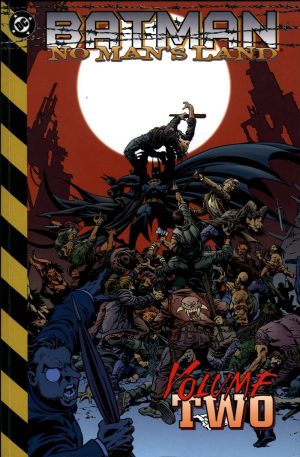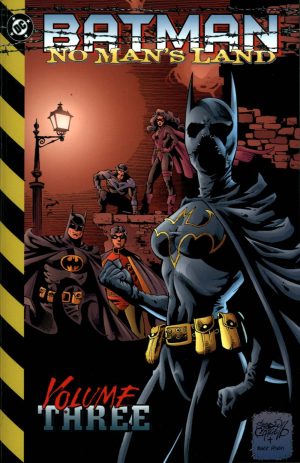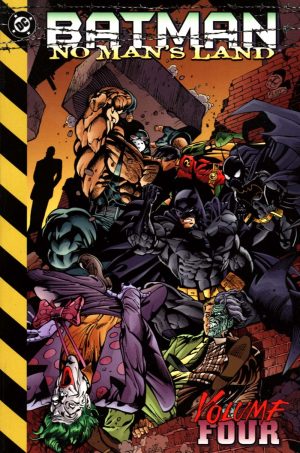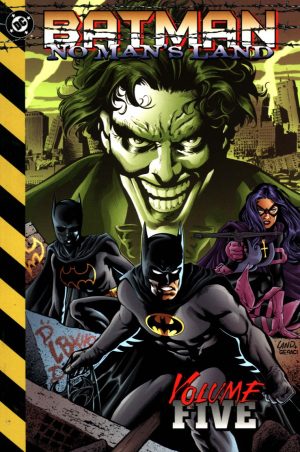Review by Frank Plowright
An earthquake has reduced much of Gotham to rubble, and as seen in The Road to No Man’s Land, the national authorities have decided restoration costs aren’t viable. Citizens have been evacuated, bridges and tunnels closed, and it’s only the lawless and dispossessed who remain.
This is an introductory volume, setting the scene by combining two longer outings, each with a consistent creative team. First up are film writer Bob Gale and artist Alex Maleev who set the quality bar so high it’s not bettered over the remainder of the series. Their dramatic opening chapters are also reprinted separately as No Law and a New Order. They establish Gotham is now divided into several areas each controlled by a different gang, except that because things have so drastically changed, one of those gangs is what remains of Gotham’s police force, who’re still protecting people. It’s definitely a very different world. Barbara Gordon is also strongly featured, confined to a wheelchair and with her technological wizardry redundant when there’s no power. There’s a new Batgirl, and before Gale signs off he’s also returned Batman and established that he too needs to change his methods to operate in what Gotham has become.
Maleev is still a relative novice, and hasn’t transitioned into the more static style he used on Daredevil, which better disguises what he’s not so good at drawing. However, the storytelling and atmosphere outweigh any concerns over poor anatomy and foreshortening, and considering he’d drawn very few comics beforehand, Maleev was a definite find. Dale Eaglesham came to the second story with a greater track record, primarily on Conan and the Punisher, and supplies confident and expansive pages of a wrecked city and those who roam through it.
The central issue in Devin Grayson’s story is a brave priest wanting to maintain a peace-oriented mission open to all and allied to none. The former police believe he’d be better under their protection, and the Huntress isn’t impressed at their welcoming the Scarecrow. This is far more standard 1990s Batman, adequate without ever hitting the highspots, and undermining Gale’s thoughtful work about the value of bullets in Gotham by opening the final chapter with them flying all over. The broad path is almost signposted and you may also feel the Scarecrow wasn’t the ideal villain for the role he’s given.
When originally collected in 1999 and 2000 the assorted chapters of No Man’s Land occupied five graphic novels. That was reduced to four bulkier books when repackaged from 2011. This content is found in the first of that series, and also in No Man’s Land Omnibus Volume One.
No Man’s Land might have ended the Batman crossover era, but it’s by some distance the best of them. Gale’s quality isn’t an anomaly, but a statement of intent, and a method of assorted creative teams gradually moving things forward while using the background to tell their own tales consistently pays off. Volume Two is next.
